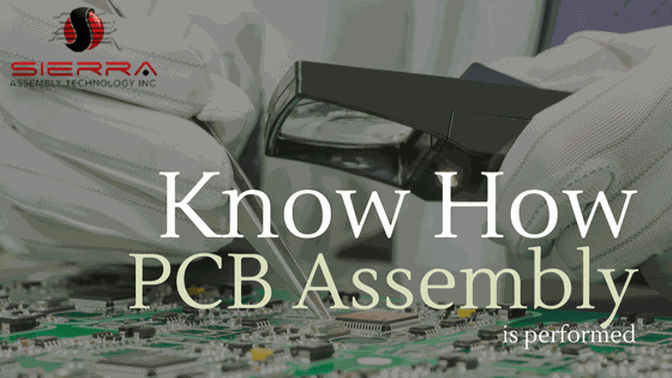The process of Printed Circuit Board (PCB) assembly or manufacturing consists of a number of steps. All these steps should go hand-in-hand for a decent PCB Assembly (PCBA). It is very important for a step to have a synergy with the previous step. In addition to this, input should receive feedback from the output, which makes it easier to and convenient to track and resolve any errors at an early stage. What are the steps involved in the assembly process of a PCB? Read on to get answer to this question.
Steps Involved in the PCB Assembly Process
There are numerous steps involved in the PCBA and manufacturing process. If you want to achieve the best quality end product, here are the steps to be followed:
-
Step 1 – Adding Solder Paste: This is the most initial stage of the assembly process. In this stage, solder paste is added on component pads, wherever soldering is required. The solder paste is placed on the pad, and is registered in the right position with the help of solder screen. This screen is made from PCB files, and has holes.
-
Step 2 – Placing the Components: Once the solder paste is added on the component pads, it is time to place components. The PCB is passed through a machine, which places these components precisely on the pads. The tension offered by the solder paste holds the components in place.
-
Step 3 – Reflow Oven: This step is used to fix the components permanently to the board. After the components are placed on the board, the PCB is passed through reflow oven conveyor belts. The controlled heat of the oven melts the solder that is added on the board in the first step, thus connecting the components permanently.
-
Step 4 – Wave Soldering: In this step, the PCB is passed through molten solder wave. This creates an electrical connection between the solder, PCB pad, and the component leads.
-
Step 5 – Cleaning: Till this step, all the soldering process is done. During the soldering process, lot of flux residues are formed around the solder joints. As the name suggests, this step involves cleaning of the flux residues. Deionized water and solvents are used to clean flux residues. With this step, the PCB assembly is completed. The upcoming steps ensure whether the assembly is done properly.
-
Step 6 –Testing: By this stage, the PCB assembly is completed, and an inspection is launched to test positioning of components. This can be performed in two ways –
-
Manual: This inspection is generally conducted for smaller assemblies for number of components not exceeding hundred.
-
Automatic: This inspection is performed to check for any poor joints, wrong components, misplaced components, etc.
For building a superior quality PCB assembly, all the steps discussed above should be carried out. To avoid mistakes, you can get help from the experts, who have massive experience in assembly and manufacturing of PCBs. Sierra Assembly is one such leading player in this field. The company delivers high quality PCBs for its clients across diverse industries.


